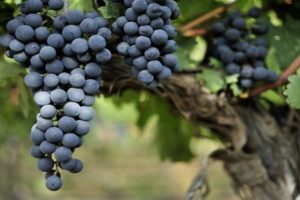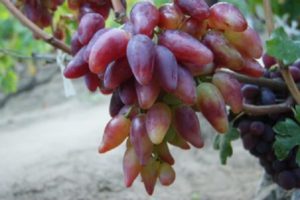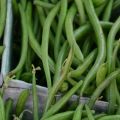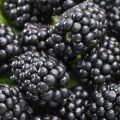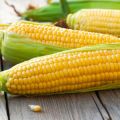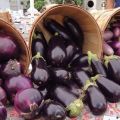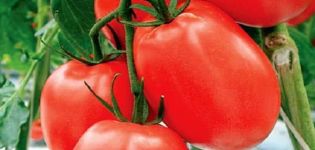Description and history of the selection of Senator grapes, advantages and disadvantages
Senator grapes are a popular grape crop characterized by high taste qualities of berries, fruit size and a beautiful shade of grapes. Two grape species were bred at once by the breeders Burdak and Pavlovsky, who combined different varieties, but, in the end, got similar crops. Therefore, before choosing which Senator variety to plant in your garden, you need to find out the pros and cons of the species and choose the right one.
Breeding history
Plant breeding is divided into two stages:
- The first to cross the varieties Podarok Zaporozhye and Chocolate agricultural technician Pavlovsky. Selection plants are immune to viruses and diseases, while they have a pleasant berry taste.
- Another grape form of the Senator was bred by the breeder Burdak on the basis of crossing two varieties - Arcadia and Talisman. Although the variety is new, it has already won the sympathy of many gardeners.
Description of the variety
A detailed description of the Senator variety is considered in relation to its two breeding forms.
The culture has a number of characteristics:
- The plant belongs to early crops, however, the ripening time of the fruits varies, depending on the region of growth. In the southern territories, it takes up to 125 days from the planting period to the first harvest. In frosty areas, the ripening period will be up to 140 days.
- A plant with a high survival rate.
- Bushes with strong trunks form a lush crown. The leaves are large, with pronounced veins. The flowers are bisexual, so the plant does not require additional pollination.
- Frost resistance. It is better to plant grapes in warm regions, with temperatures down to -24 degrees, or prepare shelters for wintering plants.
- Disease resistance is high.

The main plus of culture is indifference to berries on the part of wasps. According to its characteristics, the Burdaka variety is similar to the Pavlovsky species.
Characteristics of grape berries
Grape berries have a number of characteristics:
- Large oval grapes, up to 15 grams each.
- The mass of the brushes varies from 0.75 to 1.5 kilograms.
- The berries taste sweet, with a nutmeg aftertaste.
- The color of the berries varies from pink to dark red, purple.
- Juicy pulp that melts in the mouth.
Also, the variety has a high yield, which depends on the conditions of the vine and plant care.

Landing features
A decent grape harvest can be obtained if you take into account the peculiarities of planting.
Soil selection
Grapes grow on fertile soils with a significant presence of nutrients. The structure of the soil is light, not clayey.
Choosing a place and time
Plants are planted in the spring months, after the last frost. The landing site is a well-lit area hidden from the through northern winds. In this case, southern or southwestern slopes are suitable.
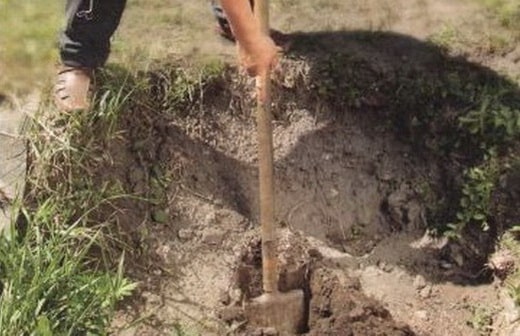
Landing
Planting a culture occurs in several successive stages:
- Preparing holes for planting.
The distance between the planting sites is at least 1.5 meters, since the plants have a powerful root system.
- On the bottom of the grooves, pour fertile soil, combined with organic fertilizing, peat.
- When groundwater flows through, prepare drainage from fine gravel, expanded clay at the landing site.
- Before planting, root the seedlings in a solution of potassium permanganate for a day.
- Remove weak, damaged shoots on the seedlings, shorten the rhizomes, process them with a clay mash.
- Plant seedlings, crush them with earth, compact the soil and moisturize abundantly.

Correct care
Proper plant care includes a number of agrotechnical measures, discussed below.
Watering and feeding
The grape variety is picky about watering, does not tolerate both excess moisture and overdried soil. Arrange watering several times a season:
- in the spring;
- 7 days before flowering;
- after flowering;
- before winter shelter.
It is better to use a drip irrigation system for this.
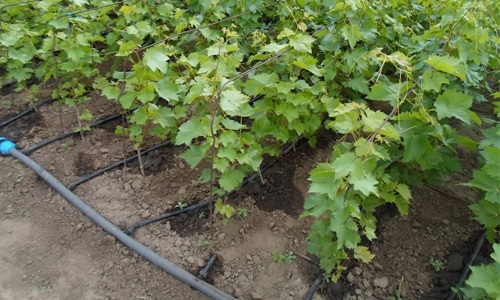
In this case, combine watering with fertilization. To nourish plants use:
- Natural fertilizers:
- manure;
- bird droppings.
- Chemical additives:
- Novofert;
- Master.
Pruning
Culture also needs timely circumcision, which is done in two ways:
- Long - 8-10 eyes.
- Short - 5-6 eyes.
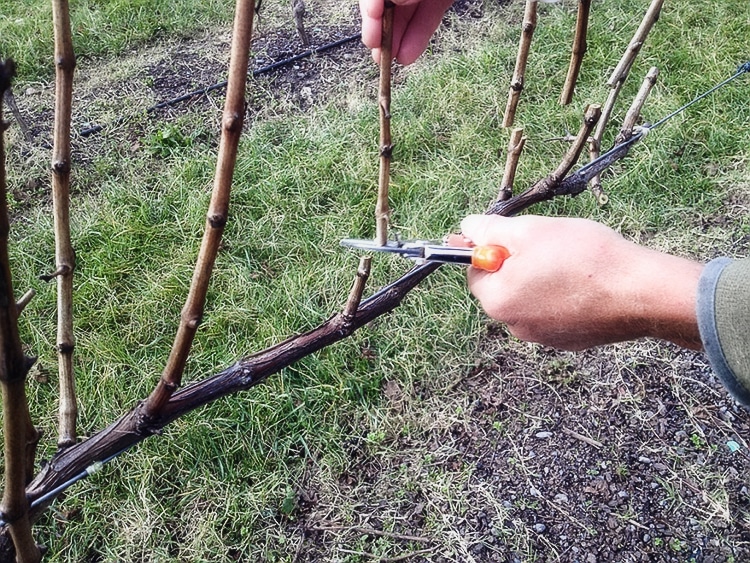
For the first time, pruning is carried out after the spring opening of the buds. When the berries have become the size of a pea, the plants are sprayed with agents to combat diseases and pests:
- Topaz;
- Ridomil Gold.
Advantages and disadvantages of the variety
The grape crop has a number of advantages over other types:
- high-quality, bountiful harvest, which can be used both fresh and processed into wine;
- frost resistance of shrubs;
- berries of the same size and huge tassels;
- resistance to pests, fungal infections;
- high survival rate of seedlings and vigor of growth;
- simple care for the bushes.

However, the variety has its drawbacks:
- Loose pulp without the usual crunch.
- Mandatory preparation of the culture for wintering in the northern regions.
- Due to contact with water, damage to the berries, damage to the brushes is possible.
Reproduction methods
From the methods of reproduction, the plants are chosen as follows:
- Cuttings.
- Layers.
- Vaccinations.
The first method is considered the simplest, and the last will help replace low-value sprouts with high-quality plants..
Pests and diseases
Although the variety is classified as resistant to diseases and diseases, it is important to carry out timely prevention:
- treatment of the vine with antifungal agents;
- cutting off spoiled twigs, leaves;
- removal of deciduous cover near the bush;
- thinning of weeds.
